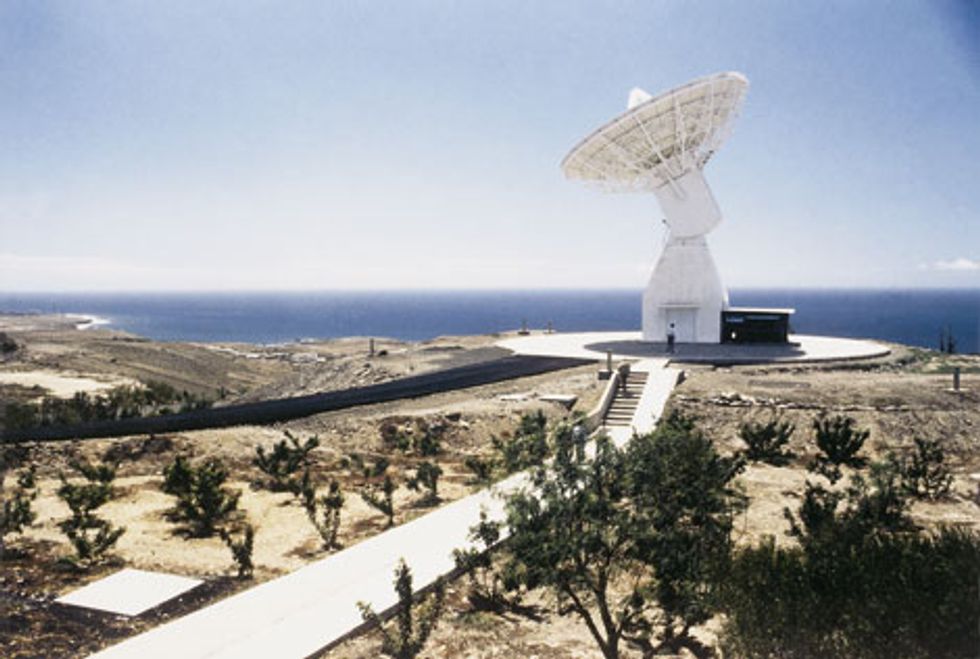5 November 2007—China’s first lunar satellite began orbiting the moon today for the start of a yearlong mapping and chemical-analysis mission. The craft is the second probe to arrive in the past month. Japan’s Kaguya entered orbit on 19 October. India, too, plans a lunar mission for 2008.
Chang’e-1, the US $169 million Chinese probe, was launched on 24 October from Xichang Satellite Launch Center, located in southwest China’s Sichuan Province. Designed and built by the China Academy of Space Technology, the satellite is the first in a series of three spacecraft that China will use to explore the moon; they will be launched at five-year intervals.
”Chang’e-1 will be placed into a polar orbit 200 kilometers off the surface, while Chang’e-2 will be a lander using a possible rover. Chang’e-3 will return lunar samples to Earth,” says Zongyu Yue, a Ph.D. in lunar-science analysis at the China University of Geosciences in Beijing. The Chinese are determined to send humans to the moon by 2020 with the idea of later setting up their own lunar base. With an eye toward that, the main scientific goals of Chang’e-1 are to take three-dimensional images of the entire lunar surface, to look for evidence of helium-3 in the lunar soil as a potential fusion power source, and to look for any water ice that might be hidden in permanently shadowed polar craters.
LEARNING CHINESE
The ESA ground station at Maspalomas, Canary Islands, is part of the European deep space network ESTRACK, on loan to China to help track and control its new lunar satellite, Chang'e 1.
The lunar mission is made possible through both politics and technology. China has no deep-space network of its own for tracking and communicating with the satellite when it is in lunar orbit. The United States’ network—consisting of sites in California, Australia, and Spain—is off-limits for political reasons. So the mission will rely on a combination of Chinese and European assets.
On the mainland, the country has a Unified S-Band system, a network of three 12-meter antennas that are mainly designed for its manned spaceflight program and which operate in the commonly used 2.2-gigahertz satellite band. It also has a tracking ship stationed in the Pacific to aid in the project. Until now, this system has been adequate for distances as far out as 80 000 kilometers—good enough for China’s Earth-orbiting satellites and manned missions—but Chang’e-1 will be orbiting the moon at 400 000 km, and for that distance China needed something more. So it is adding four large astronomical radio-dish antennas to the network and using them as a very long baseline interferometer. The VLBI allows observations from the four radio telescopes, strategically stretched across 5000 km of the country, to be combined as if they were one giant radio dish antenna.
While the Chinese are confident that their own tracking, telemetry, and command (TT&C) system would provide accurate navigation for the flight from the Earth to the moon, now that Chang’e-1 has pulled into lunar orbit, the craft will need constant monitoring and adjustments calculated from range and velocity data from a deep-space network. Fortunately, the European Space Agency (ESA) has offered China assistance with communications and tracking relays to and from the probe using its deep-space network ESTRACK. ESA’s collaboration with China began with the end of Europe’s SMART-1 moon mission in 2006. In preparation for Chang’e, ESA provided China with the frequencies of the SMART-1 lunar probe so it could practice for tracking the Chang’e-1 mission. In return, the Chinese have offered to share the data gleaned from the Chang’e-1 mission with ESA. ”Our support is mainly an exchange of information and lessons learned from our ESA SMART-1 mission in the area of scientific data handling and archiving,” says Detlef Koschny, ESA’s project scientist for the Chang’e-1 mission.
About the Author
Barry E. DiGregorio is a science writer and astroenvironmentalist from Middleport, N.Y.
